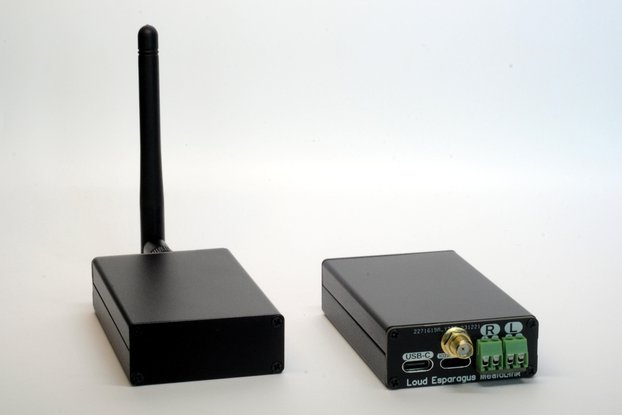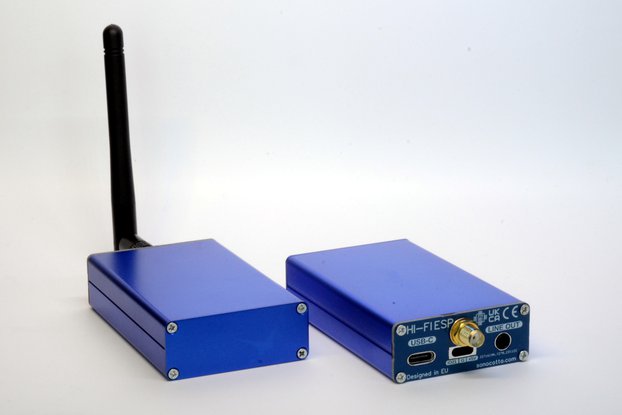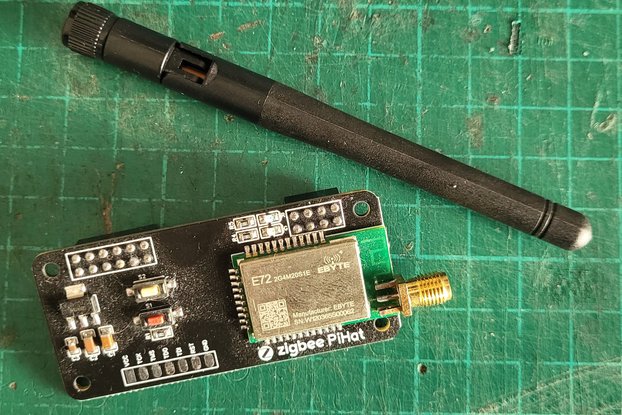Portable, open-source, ESP8266-powered Wireless Terminal
Designed by Sonocotta in Poland
Buy with confidence.
Our Tindie Guarantee protects your purchase from fraud. Learn More
What is it? ESP Wireless Terminal is a handy kit allowing Serial communication with remote device over the air. Assume you have a serial accessible device (like Raspberry Pi or ESP32 node) that fall…
Read More…ESP Wireless Terminal is a handy kit allowing Serial communication with remote device over the air.
Assume you have a serial accessible device (like Raspberry Pi or ESP32 node) that falls into boot loop. If for some reason it is not possible or not convenient to bring your laptop to the device proximity, you can attach Wireless Terminal to the device and connect to it via WiFi. Next you use ESP8266 hosted web-based terminal as if you were connected directly

Does it ever happened to you that one of your Raspberry Pis falls into boot loop somewhere on the top shelf? Every Pi running from sdcard is doomed to refuse to work one day (unless you run them from read-only filesystem, which you should do BTW).
When that happens I usually disconnect it and bring to the bench to check serial console. Recently It took me more time to actually disassemble device from it's place, than actually fixing it. That get me thinking, surely some people made ESP8266 serial bridge over-the-air, and surely I'd like to have one nearby, next time ping is not coming back.
Not long after first prototype was born, fast forward few month I have revision A board on my bench
Revision A have onboard battery management IC and works off 14500 Li-Ion battery. It also has RGB led for status indication.
Kit includes all headers and connectors you need to make it work. However you’d need to have soldering iron and small piece of soldering wire.
Soldering job will take 5 to 30 minutes depending on your skills.
Please check on the project page for details assembly instructions
Revision A is pre-assembled at factory and do not require any soldering.
Kits ships with sample Platformio project, so please follow the official Platformio installation guide first.
Upload Filesystem Image taskUpload tasktelnet 192.168.4.1The emulator is implemented using the jQuery Terminal Emulator
UART0 is used for both programming and connection to target. After device start UART0 is reconfigured to use GPIO13/15 for communication, so default GPIO01/03 that normally connected to programmer via UART-USB bridge is not interfering with target device.
UART1 is used for debug output, since RX is not available only TX is present on pin GPIO02, normally it is not connected to anything, so you need to attach external USB-UART bridge.

You can find documentation such as board schematics, firmware, and software samples in our GitHub repository. You can also follow progress on our Hackaday.io page.
No country selected, please select your country to see shipping options.
No rates are available for shipping to .
Enter your email address if you'd like to be notified when ESP8266 Wireless Terminal DIY Kit can be shipped to you:
Thanks! We'll let you know when the seller adds shipping rates for your country.
| Shipping Rate | Tracked | Ships From | First Item | Additional Items |
|---|---|---|---|---|
|
:
|
Most of the packages are sent the next business day in the morning CET time. Delivery time varies wildly, but typically it is 1-2 weeks within EU and 3-4 weeks outside EU due to delays in customs. If the package does not show up after 8 weeks, please reach out for a replacement or refund.
Product: (5.00)
Documentation: (5.00)
Shipping: (5.00)
Communication: (5.00)
Gary | April 10, 2023
Mathias | March 10, 2023
Buy with confidence.
Our Tindie Guarantee protects your purchase from fraud. Learn More

$21.00
Free Shipping!

$21.00
Free Shipping!

$16.00
Free Shipping!

$69.00
Free Shipping!

$24.00
Free Shipping!

$45.00
Free Shipping!

$21.00
Free Shipping!

$45.00
Free Shipping!

$35.00
Free Shipping!

$35.99
Free Shipping!

$15.99
Free Shipping!

$35.00
Free Shipping!
By clicking Register, you confirm that you accept our Terms & Conditions
We recognize our top users by making them a Tindarian. Tindarians have access to secret & unreleased features.
We look for the most active & best members of the Tindie community, and invite them to join. There isn't a selection process or form to fill out. The only way to become a Tindarian is by being a nice & active member of the Tindie community!
